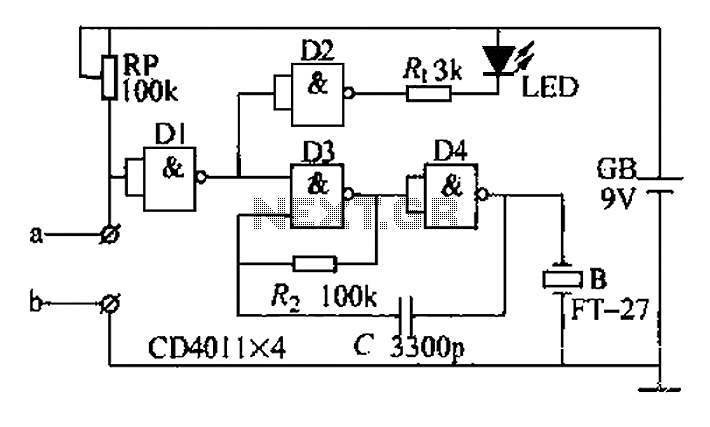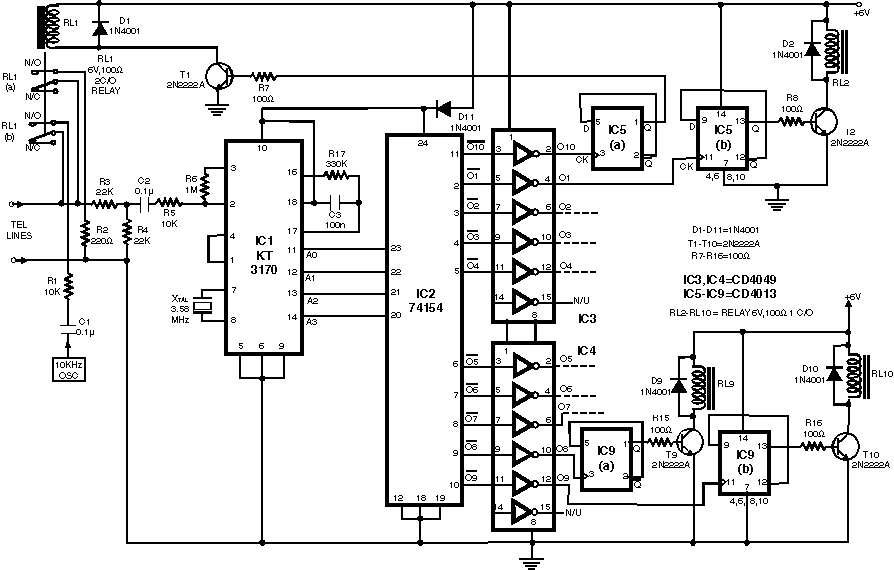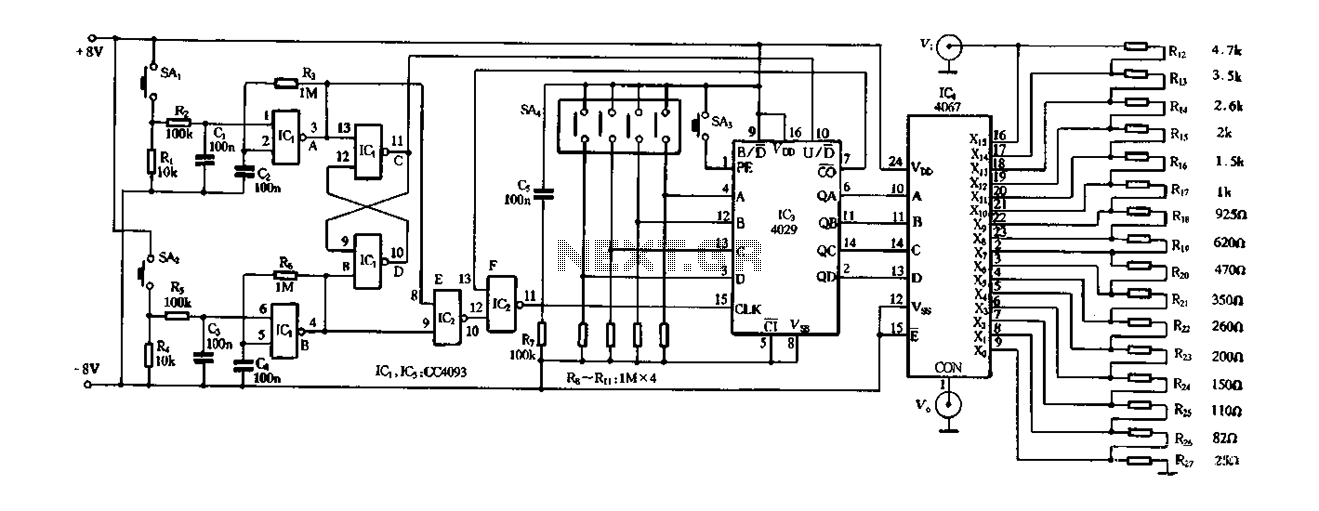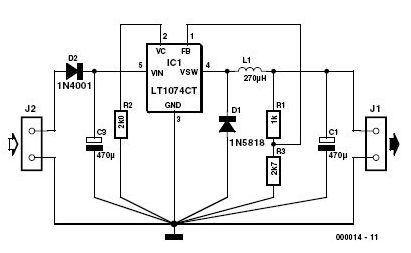
2Y- connection two-speed motor contactor control one circuit
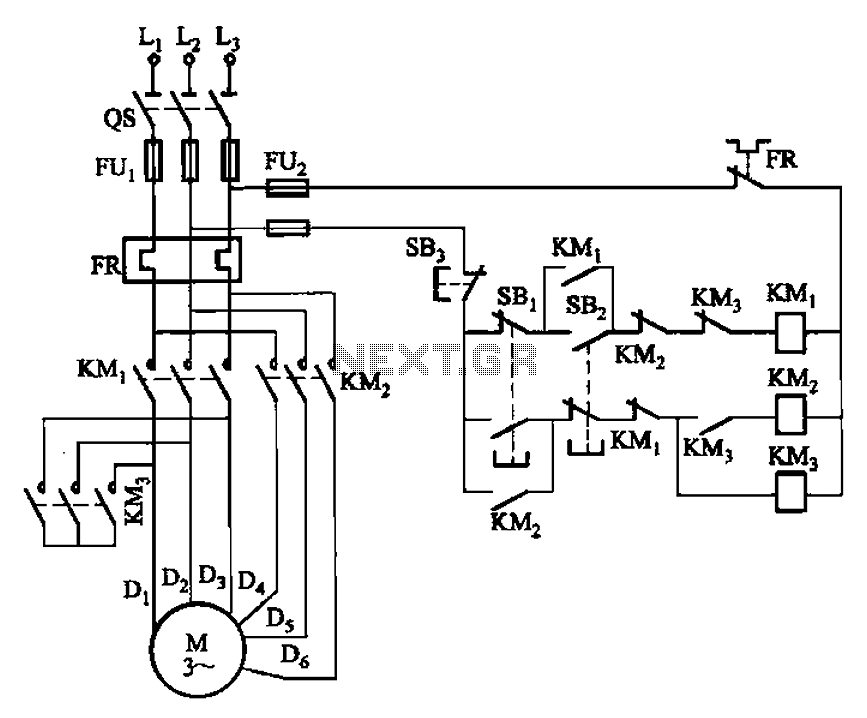
The circuit depicted in Figure 3-96 features a low-speed operation button (SBz), a high-speed operation button (SBi), and a stop button (SB3). In this configuration, a motor is connected in such a way that when the low-speed button is pressed, the first contact of the stator winding (KMa) is activated, followed by the activation of KMz, which pulls in the power. This arrangement is designed to prevent excessive current from burning out the main contact of KM3 when the power is initially turned on.
The circuit operates by utilizing a motor control setup that integrates multiple buttons to manage the speed and operation of the motor. The low-speed button (SBz) serves to initiate the motor at a reduced speed, ensuring a gradual start-up and minimizing mechanical stress. When SBz is pressed, it completes a circuit that energizes the relay KMa, which subsequently engages the first contact of the stator winding. This initial activation is crucial for establishing the motor's operational state.
Once KMa is engaged, the next relay, KMz, is activated, allowing the motor to draw power efficiently. The sequential activation of these relays is essential for controlling the motor's speed and preventing sudden surges in current. The design incorporates a safety feature to mitigate the risk of damage to the main contact KM3, which could occur if the motor were to receive excessive current during start-up. By ensuring that the relays engage in a controlled manner, the circuit protects the components from potential burnout.
In addition to the operational buttons, the circuit includes a stop button (SB3), which provides a means to halt the motor's operation safely. This button interrupts the power supply to the motor, allowing for immediate cessation of operation when required. The overall design of this circuit emphasizes reliability and safety, making it suitable for applications where motor control is critical. The careful arrangement of the relays and the operation buttons ensures that the motor can be operated effectively across different speed settings while maintaining protection against electrical faults. Circuit shown in Figure 3-96. Figure, SBz is running at low speed button, SBi as the high-speed operation button. SB3 for the stop button. In this circuit, a motor connected in to shape when 2Y, first contact the center point of the stator winding KMa turned, then KMz it was electric pull, power. This can be avoided when the power is turned on, due to excessive current burn KM3 main contact.
The circuit operates by utilizing a motor control setup that integrates multiple buttons to manage the speed and operation of the motor. The low-speed button (SBz) serves to initiate the motor at a reduced speed, ensuring a gradual start-up and minimizing mechanical stress. When SBz is pressed, it completes a circuit that energizes the relay KMa, which subsequently engages the first contact of the stator winding. This initial activation is crucial for establishing the motor's operational state.
Once KMa is engaged, the next relay, KMz, is activated, allowing the motor to draw power efficiently. The sequential activation of these relays is essential for controlling the motor's speed and preventing sudden surges in current. The design incorporates a safety feature to mitigate the risk of damage to the main contact KM3, which could occur if the motor were to receive excessive current during start-up. By ensuring that the relays engage in a controlled manner, the circuit protects the components from potential burnout.
In addition to the operational buttons, the circuit includes a stop button (SB3), which provides a means to halt the motor's operation safely. This button interrupts the power supply to the motor, allowing for immediate cessation of operation when required. The overall design of this circuit emphasizes reliability and safety, making it suitable for applications where motor control is critical. The careful arrangement of the relays and the operation buttons ensures that the motor can be operated effectively across different speed settings while maintaining protection against electrical faults. Circuit shown in Figure 3-96. Figure, SBz is running at low speed button, SBi as the high-speed operation button. SB3 for the stop button. In this circuit, a motor connected in to shape when 2Y, first contact the center point of the stator winding KMa turned, then KMz it was electric pull, power. This can be avoided when the power is turned on, due to excessive current burn KM3 main contact.
